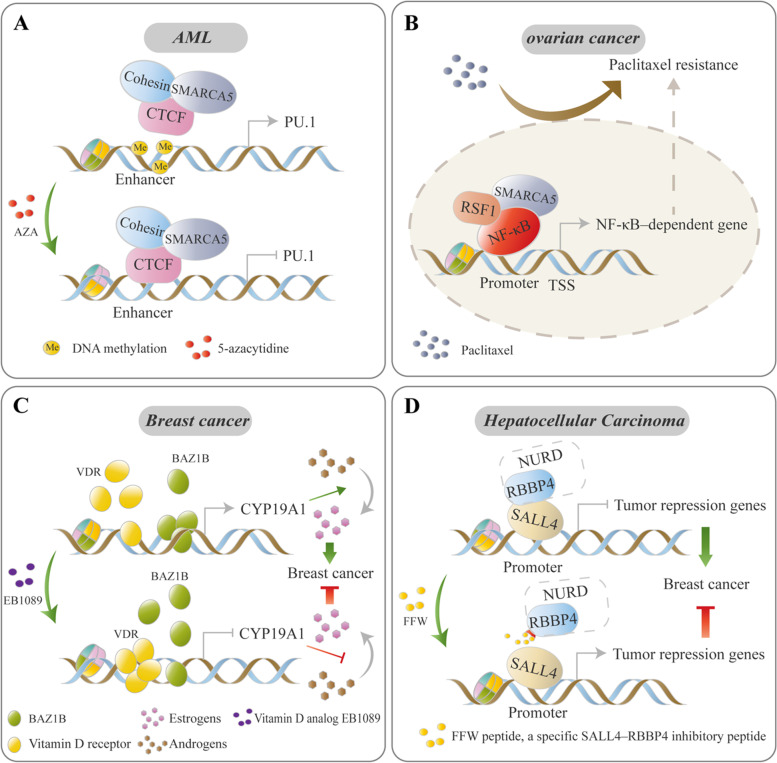Fig. 4.
ISWI proteins mediate the chemotherapy response and chemical resistance. Some chemotherapy response- and chemoresistance-related genes are regulated by ISWI complexes. The transition of ISWI occupancy by changing DNA methylation levels or targeting ISWI protein/TF interactions may be two treatment strategies for pharmacological intervention. A In AML, the binding of the SMARCA5-CTCF complex at the PU.1 gene is blocked due to DNA methylation. Upon treatment by AZA-mediated DNA demethylation, the SMARCA5-CTCF complex is recruited to the enhancer of the PU.1 gene and inhibits its expression [45]. B The RSF1-SMARCA5 complex functions as a coactivator for NF-κB, consequently augmenting the expression of NF-κB-dependent chemoresistance-related genes, further resulting in paclitaxel resistance in ovarian cancer cells [56]. C Breast cancer cells with estrogen receptor positivity. After EB1089 (vitamin D analog) treatment, the occupancy of vitamin D receptor (VDR) and BAZ1B on CYP19A1 (encoding the enzyme aromatase, which can catalyze the conversion of androgens to estrogens) promoter are altered with the recruitment of VDR and dissociation of BAZ1B, which results in the inhibition of CYP19A1 transcription and contributes to the EB1089 treatment response by arresting the transformation of androgens to estrogens [70, 71]. D In HCC, the recruitment of the NuRD complex by SALL4 to the promoter of some tumor suppressors via an interaction of SALL4 with RBBP4. FFW (a highly potent SALL4-RBBp4 antagonist peptide) treatment abolishes the binding of SALL4 to RBBP4, which leads to the reactivation of tumor suppressors [111]

